London City Guide: All You Need to Know as a Student
Entertainment
Tips and Advice
Exploring
28 November, 2023
|
10 mins read
By Samir Badawy
Share
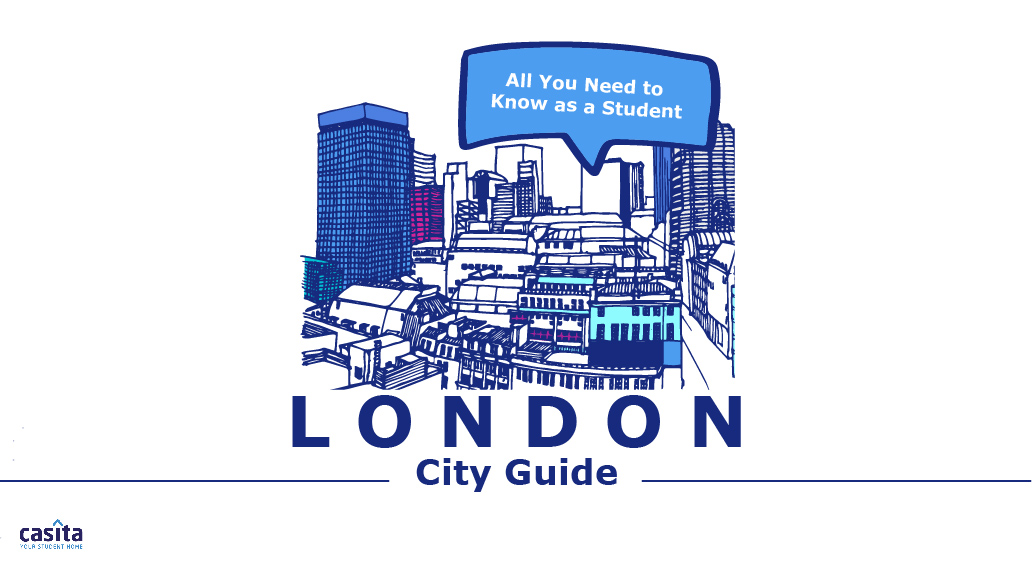
London City Guide: All You Need to Know as a Student
Entertainment
Tips and Advice
Exploring
28 November, 2023
|
10 mins read

By Samir Badawy
Share
If you’re new to London or planning to study or visit the city, then you’ll find everything you need to know about it in this London city guide. This will include a bit about the city, the top things to do, the top places to eat and drink, where to shop, and even a bit about transportation, attractions, a quick cost overview, and even some suggestions for student accommodation in London.
Consider this your local guide around the city; of course, you’ll get to know more during your time there and through your interactions with the locals. So sit tight, and let us guide you through London!
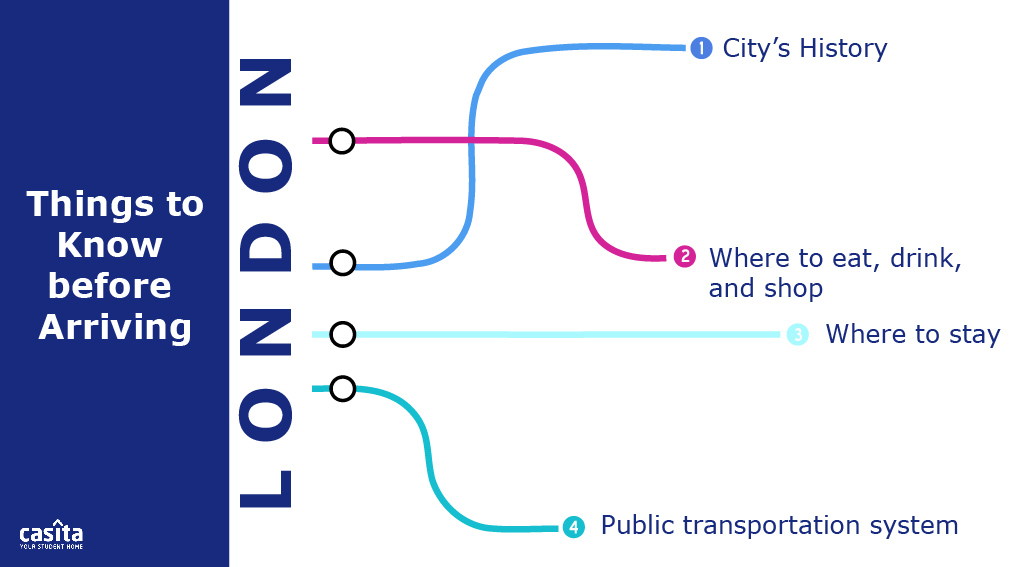
About London
London is the UK’s capital and cultural, financial, and political centre. It is also home to the British Royal family and the UK’s Royal Parliament. There are many remnants of Roman architecture still visible in London today, such as Billingsgate Roman Bath House, the Roman Amphitheatre, and the Roman walls that were built when the city was called "Londinium" in Roman times. "Londinum," which stood in the place of the current City of London, was founded between 47 and 50 AD.
Today, the city is known for being a major business destination, as it ranks among the wealthiest cities in the world, generating £496.4 billion in 2021. This city is also full of prestigious universities, attracting thousands of international students each year.
Some of the city’s best-known institutions include Imperial College London (6th worldwide as of 2024), University College London (9th worldwide as of 2024), King's College London (40th worldwide as of 2024), The London School of Economics and Political Science (45th worldwide as of 2024), and Queen Mary University of London (145th worldwide as of 2024).
Top Things to Do in London
London is an amazing city with iconic buildings, landmarks, and various tourist attractions. In this segment of the London city guide, we’ll provide you with the top things to do in the city, which include:
Visit London’s Museums and Galleries
London is an extremely cultural city and is full of museums and galleries; there are 192 museums, according to the UK government, while there are around 857 galleries in the city. London has some of the world’s top museums, with its biggest being the British Museum. If you plan to visit London’s museums and galleries, we highly recommend the London Pass, which allows you to save up to 50% while sightseeing.
Take the River Bus and Hop-On, Hop-Off Bus
For added perspective, you can take a river bus down the Thames, which provides gorgeous views of the city through the river, or take the popular double-decked Hop-On, Hop-Off Bus, which takes you around the city.
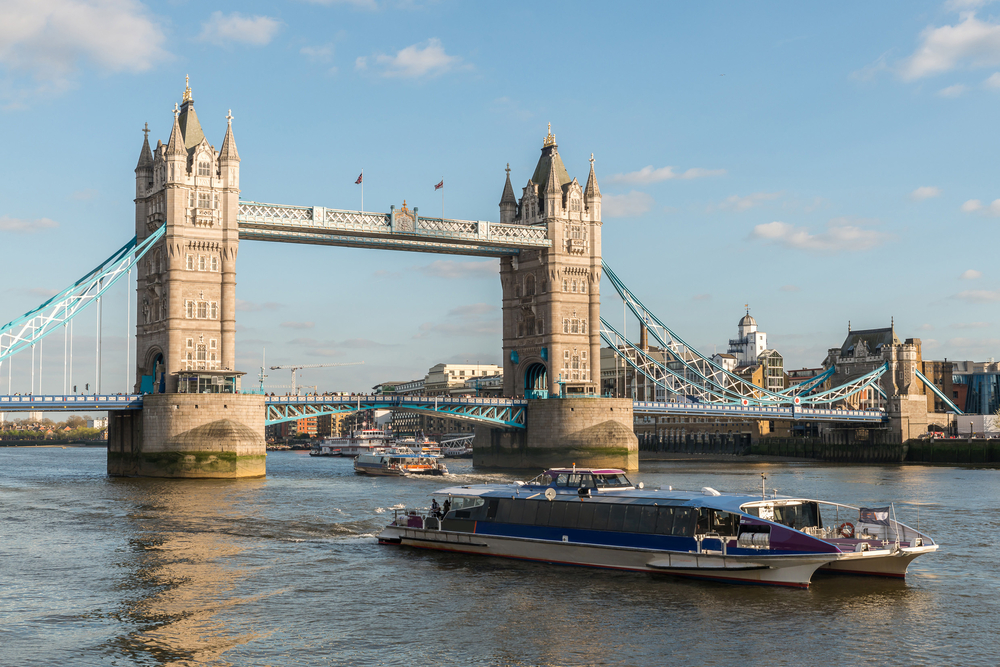
Visit Warner Bros Studios
If you’re a big movie buff, you can visit Warner Bros. Studios, where you can walk into the real-life sets of famous movies, most notably Harry Potter, where you can walk into the Great Hall, the Forbidden Forrest, Platform 9¾, Gringotts Wizarding Bank, and many more locations that will take you to this fascinating wizarding world. It also includes unique props and costumes.
Visit Twinings Café on the Strand
This is London’s oldest tea shop, located on the Strand, and it is over 300 years old. This makes it among the oldest surviving businesses in the city. Twinings is known for being the first tea merchant to bring tea into British households back in 1706.
Explore London’s Landmarks and UNESCO Heritage Sites
London is a culturally rich city as well as one that is packed with history. It is full of landmarks and tourist attractions, including UNESCO Heritage Sites such as the Palace of Westminster, the Tower of London, Maritime Greenwich, the Royal Botanic Gardens, and Westminster Abbey. Other must-visit sites include Buckingham Palace, Hyde Park, and the London Eye, which provides great views of the city’s skyline.
Top Places to Eat and Drink in London
This part of the London city guide will list some of the city’s top places to eat and drink. These options include the following:
Restaurants
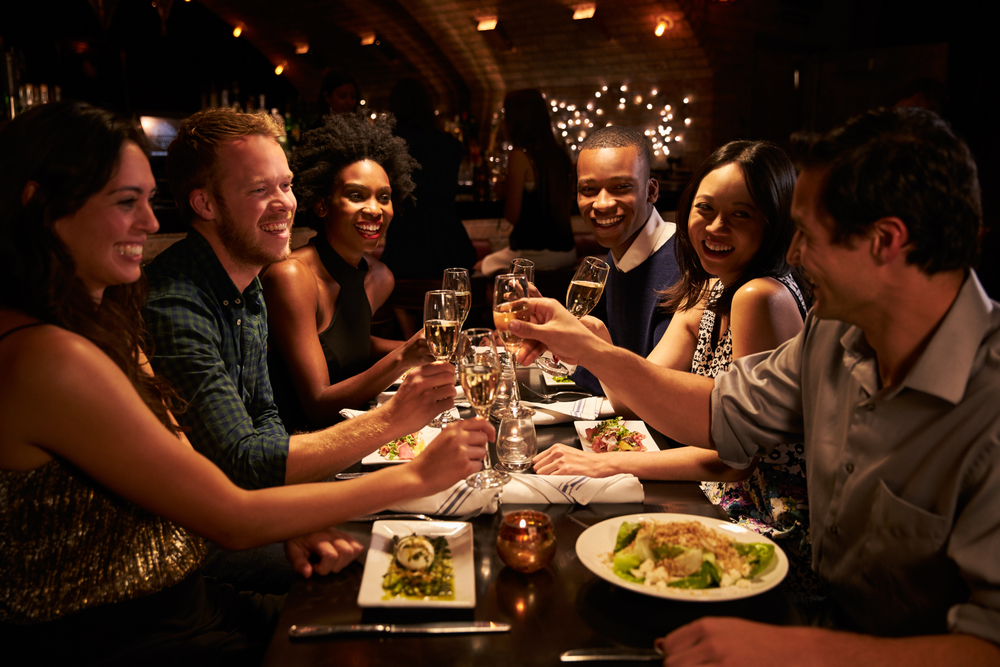
Counter 71: 71 Nile St, London
Counter 71 is a modern British restaurant that is so popular that it was featured in Vogue magazine. This restaurant has an extensive sampling menu with creative items. It also has a counter-dining style. One of its unique items is its cheese and onion gougere.
Akoko: 21 Berners St, London
This restaurant serves amazing West African food and has tasting menus for lunch and dinner. Booking a table at least 2.5 hours before arrival is generally recommended. This restaurant is a must-try, featuring unique blends of British ingredients and West African spices.
Some of their popular dishes include Herdwick lamb with Shito XO and jollof rice.
Manteca (Michelin Bib Gourmand): 49-51 Curtain Rd., London
Manteca is an Italian restaurant featured in the Michelin Food Guide. It has a Michelin Bib Gourmand rating, which signifies that it has good quality and good-value cooking. Some of their features include whole-animal butchery, hand-rolled pasta, a wood-fired bakery, and much more. They also have unique dessert items such as amarena cherry, almond cake, and vanilla gelato.
Chishuru: 3 Great Titchfield St., London
Chishuru is a West African restaurant that offers set lunch and dinner menus with unique flavours; some of their unique dishes include Yassa, Mbongo Tchobi, and Egusi, all of which are popular West African dishes.
Cafes and Tea Rooms
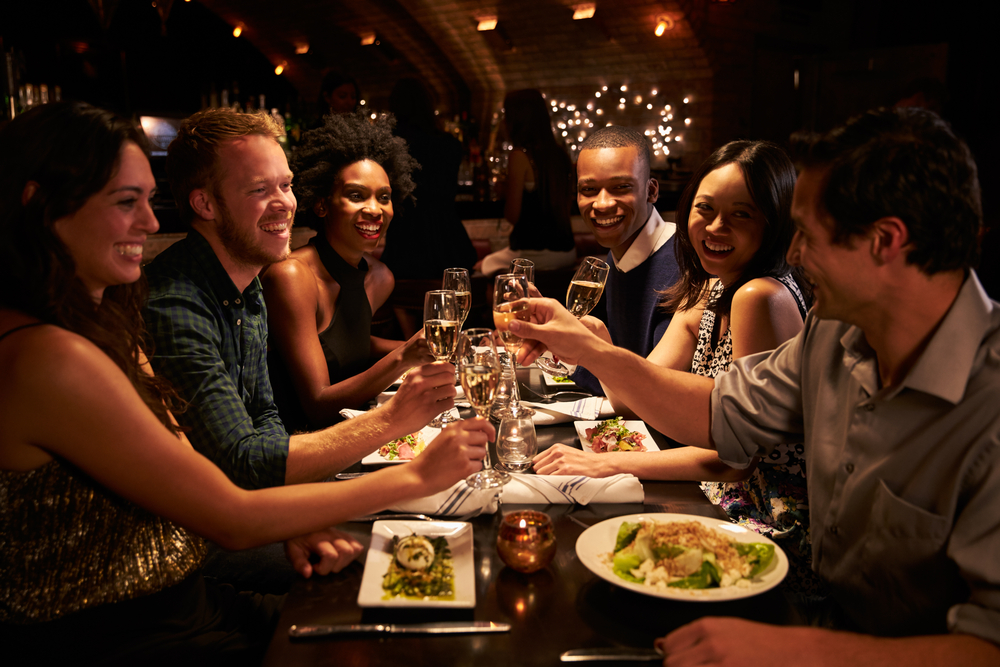
Intermission Coffee: Unit 2, The Hardy Building, Heritage Ln, London
The Intermission Coffee roastery in London serves amazing cups of sustainable coffee. Their amazing coffee beans are sourced from Raw Material, a company that sends all of its proceeds to support small-scale coffee producers. Some of their most famous items include their Piccolos and Flat Whites.
Origin Coffee: 84 Scoresby St, London
Origin is another popular local coffee place with many branches all over the United Kingdom.
This is another sustainable coffee brand, focusing on sustainably sourced coffee and using various brewing methods and coffee beans to come up with a wide range of unique creations. Not only that, but they also have their own merchandise, which consists of coffee, which you can brew at home, as well as coffee-making kits and equipment. You can also take one of their courses if you're a big coffee enthusiast.
Tea House Theatre: 139 Vauxhall Walk, London
For the ultimate British food and drink experience, you can head to the Tea House Theatre, which serves up traditional afternoon tea with many variations to meet your different tastes and budgets, not to mention their English Breakfast, the staple breakfast in the UK. Their menu also includes a lunch and evening menu, among others.
Kensington Palace Pavilion and Tea Room: Kensington Gardens, London
If you want a royal English afternoon tea experience, then this is the place for you. This tea house is in the actual Royal Kensington Palace’s gardens and is open from Monday to Sunday from 10:00 to 18:00. Their menu includes breakfast, lunch, and English afternoon tea. It is highly recommended that you reserve a table before arrival to avoid queues.
Where to Shop in London
Many parts of London are known for their major shopping streets and centres. Keep reading this London City guide to learn about some of these top areas, which include the following:
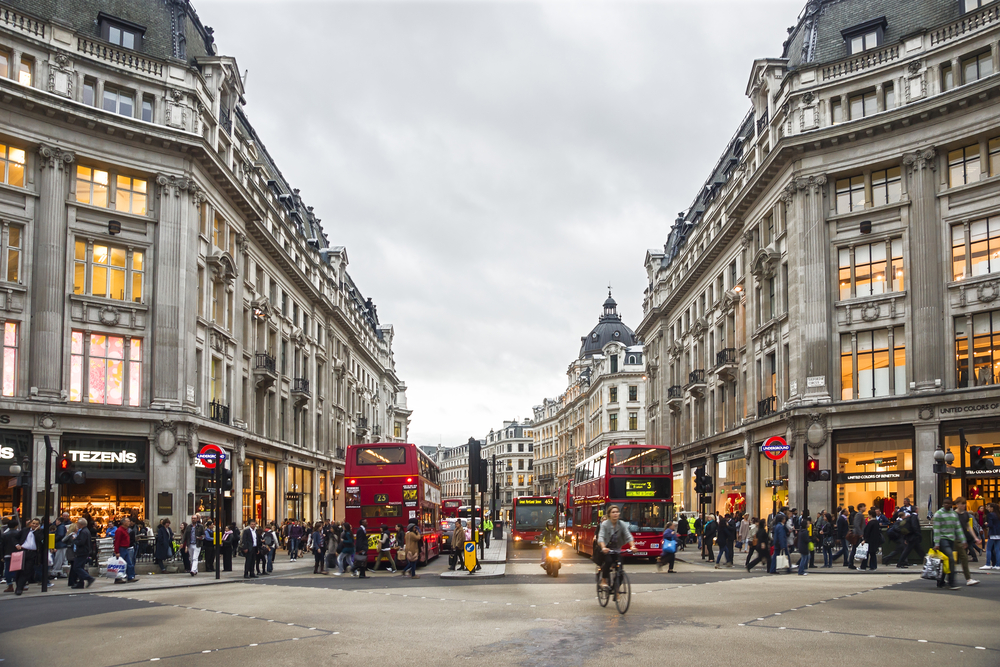
Oxford Street
Oxford Street is located in Westminster and is a major road best known for its shops, which total 300. Not only that, but it is also Europe’s busiest shopping street, with more than 200 million visitors visiting every year. Some of the street’s best-known brands include Selfridges, Marks & Spencer, Primark, and House of Fraser.
Knightsbridge
Knightsbridge is another famous street known for its Victorian structures and its rich fashion scene. For those interested in luxury brands, it has some of the world’s biggest, including Harrods, Britain’s most popular store, and other luxury brands, including Christian Louboutin, Jimmy Choo, Gucci, Hermes, and many more.
Carnaby
If you’re more into independent shops, then Carnaby in Soho is the street for you, as it has many indie boutiques and fashion and lifestyle retailers. Not only that, but it also has plenty of street art, amazing cafes and restaurants, and much more. Some of its shops include Paul Smith Soho, Finlay London, Lazy Oaf, and Columbia Sportswear. Carnaby is also known for having mostly British brands.
Covent Garden
If you’re looking for a place that brings food and shopping together, then Covent Garden is your best pick. This shopping destination has well-known shops, which include Apple, Tom Ford, and Paul Smith. It also has food spots, which include Frenchie, Henrietta, Sushi Samba, and Balthazar. Covent Garden has about 300 brands!
Covent Garden also bursts with culture, as it has the Royal Opera House, the Transport Museum, and historic cobblestone streets.
Westfield London Shopping Centre
This is Europe’s largest shopping and leisure destination, with over 242,000 sq m, 400 shops, and 750 brands. Some of this shopping centre’s biggest brands include Ambercrombie and Fitch, All Saints, Burberry, Dr Martens, Lego, Lush, MAC, Massimo Dutti, Guess, Gucci, JD Sports, and many more. Some of the dining spots there include Wahaca, Wagamama, Nando’s, Pret A Manger, and Pinkberry, among others.
Transportation in London
Transportation is another major thing to learn about before arriving in the city, which is why, in this portion of the London city guide, we’ll provide insight into the city’s transportation system.
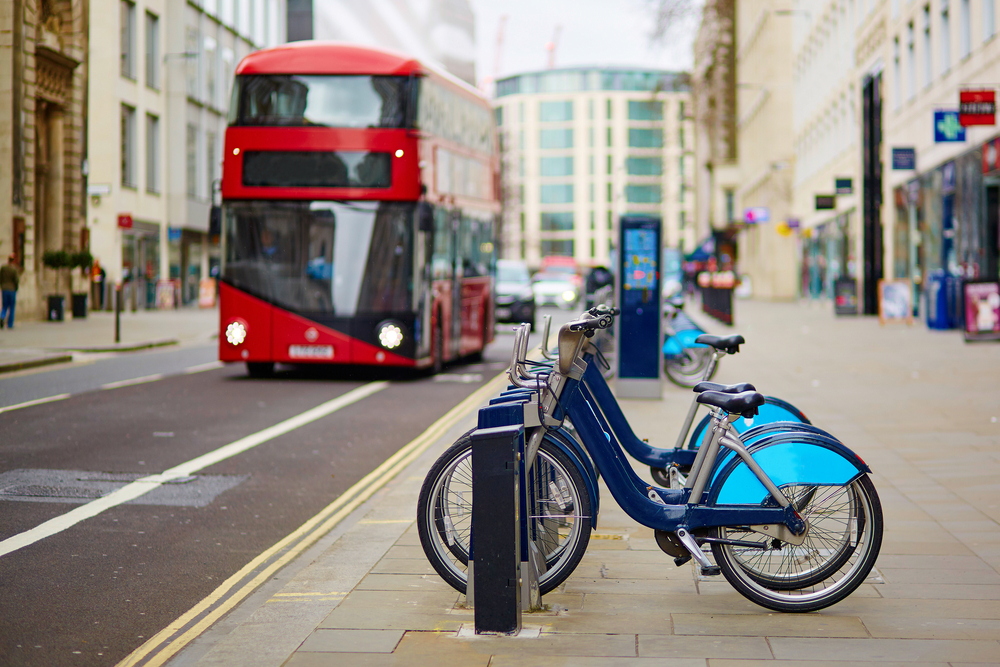
Walking
Walking is the cheapest way to get around the city and is also healthy, along with cycling. Most of our student accommodation options are conveniently located near your campus. This removes the need for you to commute. However, note that these accommodations are slightly higher than more distant student accommodations. If your accommodation is a bit distant from your campus, you can use a wide range of transportation options.
Cycling
You can also consider cycling through the city, as it has amazing cycling routes that comprise 350 km. You can choose to get your own bike or use a bike-sharing system such as Santander bikes.
Cycling is the cheapest way to get around the city if walking distances are too far for students. Many purposely built student accommodation provide bikes on a bike-sharing scheme, either for free or for a small fee. Those who do not offer these may also offer bike storage spaces for your bike.
According to various sources, you can pay £200 for a good second-hand bike, and it's yours until you decide you no longer require it. Popular online marketplaces include Gumtree.
Metro
The London metro system, also known as the London Tube, is one of the city’s most reliable transportation systems. It also covers most of the city, covering 402 km. The metro also has 11 lines and 272 stations. The metro has amazing coverage throughout the city, making it ideal for students requiring long commutes.
Buses
London’s bus network has the most comprehensive system in the world and a bus fleet of more than 9,300 buses. This system is so large, in fact, that it has 675 routes and more than 19,000 stops. Most of our student accommodation options are surrounded by bus stops, making it a popular choice among students due to its convenience. Buses also provide more route flexibility than the metro.
Depending on your destination, some are better accessed by bus. You can always check Google Maps to see what the best way to commute to your destination is based on commute time.
Tram
The tram is another fast and reliable way to move around the city, with the network having 39 stops covering 28 km. The London tram network has four tram lines. The tram is another popular way to move around the city and is ideal for shorter commutes.
River
River buses are a fun way to commute through the city and have various services such as snacks, refreshments, and even toilets. Uber operates these river buses. The river bus passes through 23 piers. Moving around through the river is not as common as other transportation methods among students. It is, however, a very fun way to move around the city while providing great views from the river.
National Rail
The national rail system is a great way to move to neighbouring cities and within the city. It has 330 train stations within London. Most of these stations also have tube stations. The National Rail is also ideal for getting out of the city during your holidays or weekends and is the fastest way.
London Cab
London cabs are also another way of moving around if you’re in a hurry, and you can hail one of the 143,000 black cabs throughout the city.
If you’re planning to use the TFL (Transport for London), which includes all previously mentioned modes of transport, then you should consider getting an Oyster card for students, which is applicable for most of these and can significantly reduce your travel costs. Check out our guide on Oyster cards.
Student Life in London
Students love London not only for its prestigious universities and its ranking as one of the world's top student cities but also for its outstanding career opportunities, vibrant suburbs with amazing nightlife, countless landmarks, cultural icons, and rich culture.
As a student, you will never get bored of the city; it is multicultural, full of opportunities, and has neighbourhoods with distinct characteristics. It is also extremely well-connected, thanks to its efficient transportation system. The city is also full of events such as Wimbledon tennis, Trooping the Colour, and St. Patrick's Day, among many others.

London’s Top Attractions
Some of London’s top attractions include the following:
Tower of London
Buckingham Palace
Westminster Palace and Big Ben
Madame Tussauds
Westminster Abbey
Hyde Park
The British Museum
Tate Modern
The London Eye
Where Students Stay in London

House Shares (Most Affordable)
House Shares is the most affordable accommodation option and features single, double, and twin rooms. The starting price is £190/week (subject to change). Ideal for students looking for student accommodation near Charles Bekeev International University and student accommodation near London International University.
Rathbone Place (Affordable and Close to the City Centre)
Rathbone Place is affordable and close to the city centre. It is a 15-minute walk to the city centre and offers single, double, and twin rooms. The starting price is £285 /week (subject to change). This option is ideal for students looking for student accommodation near University College London, student accommodation near the University of London, student accommodation near the University of Westminster - Cavendish Campus, and student accommodation near the University of the Arts London.
Mannequin House Roost (Affordable Studios)
Mannequin House Roost is an option that offers affordable studio options, starting at £387/week (subject to change), ideal for those looking for the most privacy. En-suites are also available, with a starting price of £244 / week (subject to change). This option is especially suitable for those looking for student accommodation near London International University.
Cost of Living in London
According to various sources, London's average cost of living can range from £2,500 to £3,000 per month. These, however, differ based on lifestyle preferences and different needs.

Items | Cost |
One-bedroom (near the city centre) | £1,700 to £3,300 / month |
One-bedroom (outside the city centre) | £1,300 to £2,000 / month |
Student accommodation | £210 to £240 / week (average) |
Utilities (Basic Utilities and Internet) | £350 / month (on average) |
Transportation (Pay-as-you-go weekly cap) | £24.70 / week |
Groceries | £200 to £300 / month (on average) |
Check out our blog, “How to Afford Living in London as a Student?” for useful saving tips and tricks in London.
Coming to any new city can often be overwhelming, especially in a big city like London, but do not worry, as it is manageable thanks to the new friends you’ll meet and careful research that will show you what to expect. Before you know it, you’ll be one with the locals.
You can also use our helpful resources, which include “Tips to Reduce Cost of Living in the UK,” the “Best Libraries in London to Study,” “How to Use London Underground,” and many more! If you have any questions, especially regarding London student accommodation, feel free to contact us.
Entertainment
Tips and Advice
Exploring
By Samir Badawy
Share
Entertainment
Tips and Advice
Exploring
By Samir Badawy
Share





